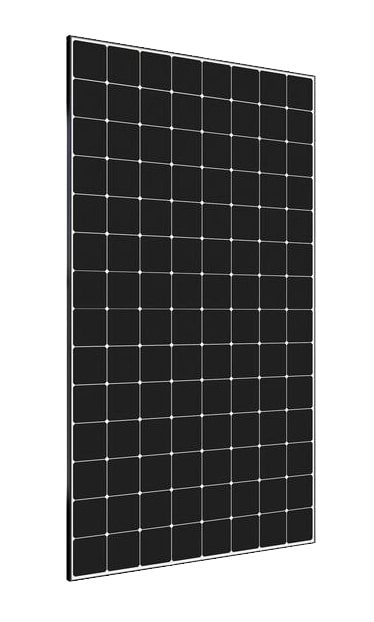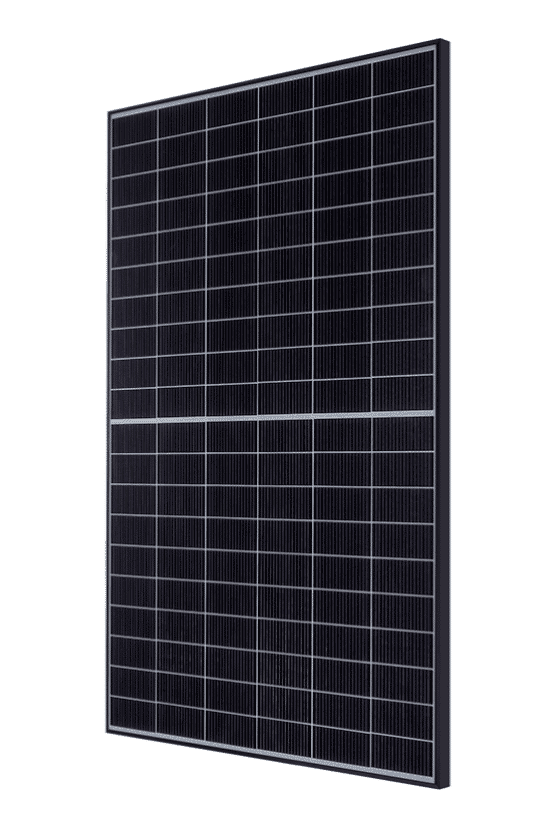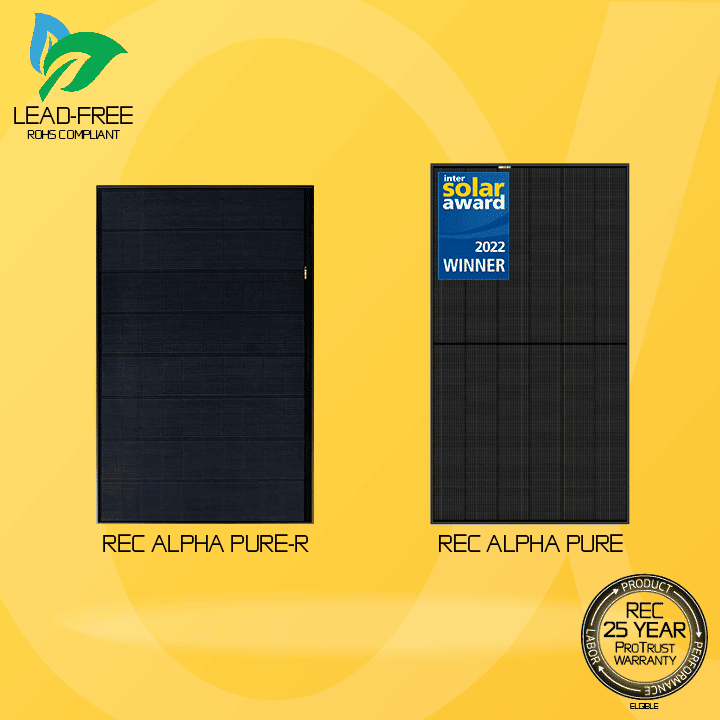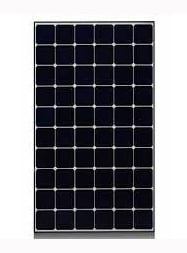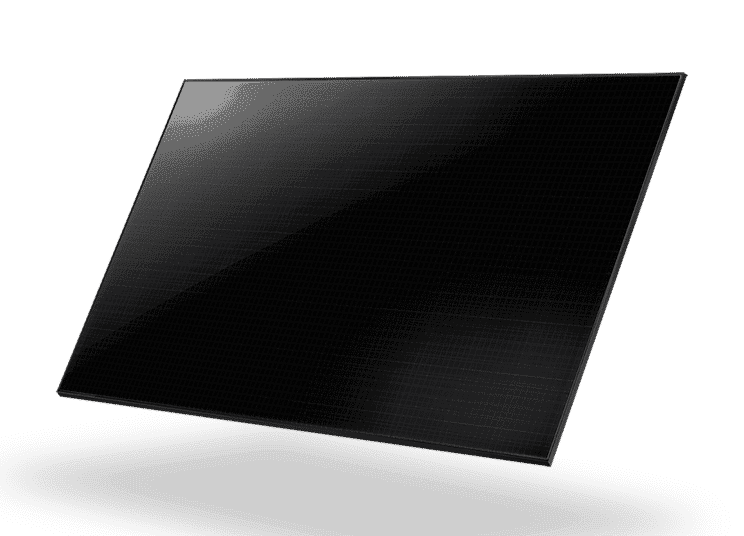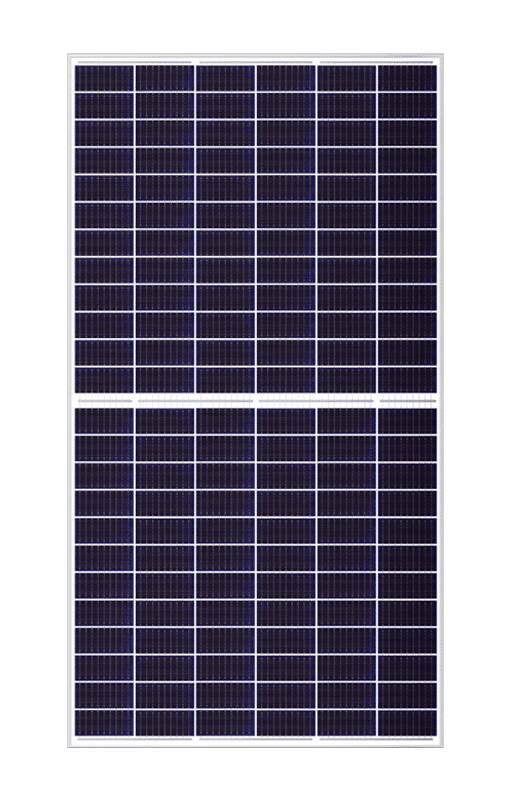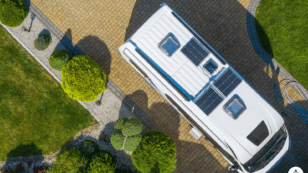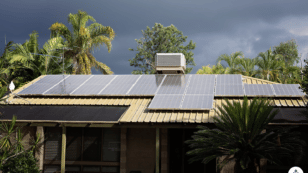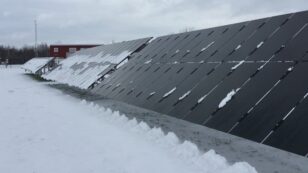
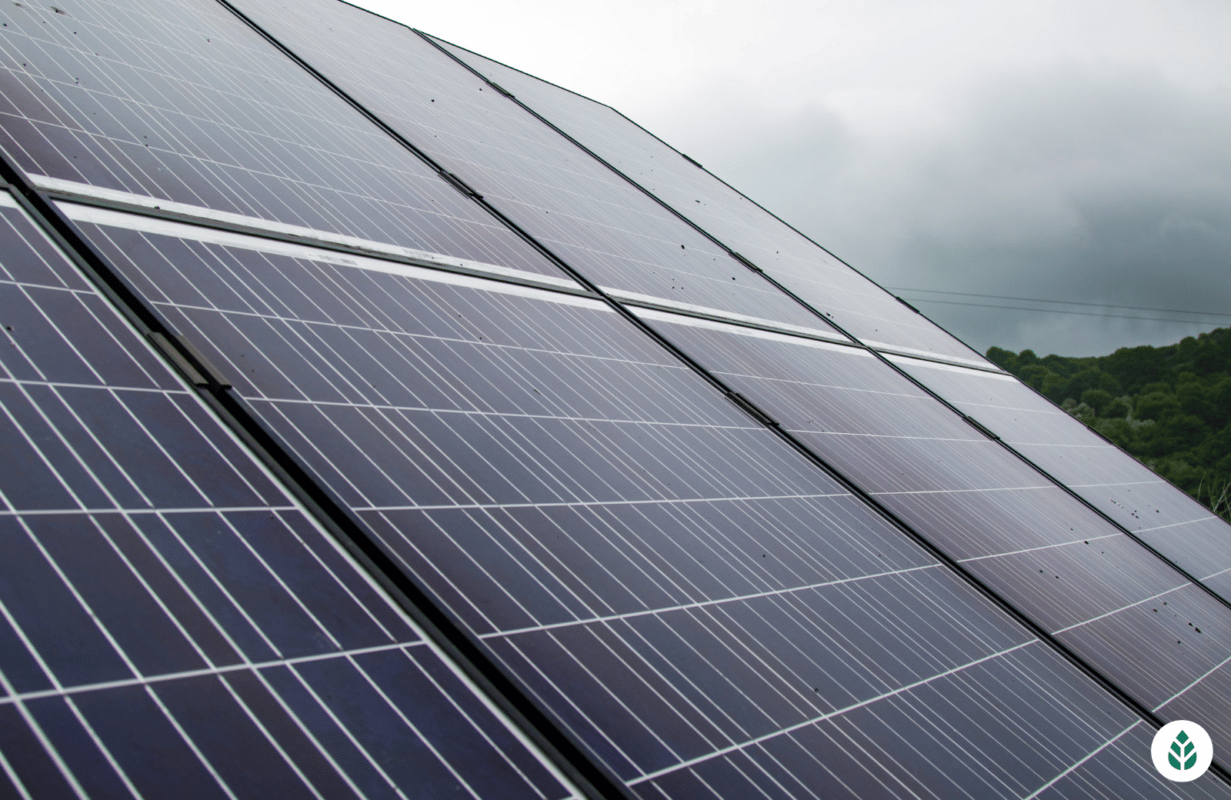
Best Solar Panels for Cloudy Days: A Homeowner’s Guide (2024)
In this guide to choosing solar panels that perform on cloudy days, you’ll learn:
- Do solar panels work in cloudy climates?
- What solar panels are best for areas with frequent cloudy days?
- Why do you need highly efficient panels for cloud coverage?
Each product and or company featured here has been independently selected by the writer. You can learn more about our review methodology here. If you make a purchase using the links included, we may earn commission.
Installing solar panels is one of the best ways to boost your home’s energy efficiency, reduce your reliance on fossil fuels and save money on your energy bills each month.
Most solar customers assume that solar panels require perfectly sunny conditions in their area if they want them to provide decent savings, but that is not always the case.
In this property owner’s guide to choosing solar panels for cloudy areas, we’ll discuss why solar panel efficiency is important, how it affects the performance of your solar system and provide a list of the solar panels that outperform others on cloudy days.

Blue Raven Solar
Pros
- Industry-leading in-house financing
- Competitive pricing
- Excellent reputation
Cons
- Doesn't offer solar batteries (coming 2022)

Blue Raven Solar
Pros
- Industry-leading in-house financing
- Competitive pricing
- Excellent reputation
Cons
- Doesn't offer solar batteries (coming 2022)
The Best Solar Panels for Cloudy Areas
If you live in an area with frequently cloudy weather but still want to convert to renewable energy, you still have some options. With solar technology advancing rapidly and solar cells becoming more and more efficient, solar customers in cloudy areas can still benefit immensely from solar.
In the sections below, we’ll discuss how well solar panels work on cloudy days and why highly efficient panels might be required in your area.
Do Solar Panels Work on Cloudy Days?
Yes, solar panels do generate energy even when it’s cloudy. Clouds don’t alter the wavelengths hitting your panels but instead scatter them and make them less intense. When any sunlight is absorbed by the cells, they will produce electricity. This occurs on the sunniest of days and when there is heavy cloud coverage.
However, the less intense or abundant the sunlight that hits your panels, the less electricity that is generated. Solar panel efficiency can drop by up to 90% in severely cloudy conditions.
Why Do You Need High-Efficiency Panels for Areas with Cloudy Climates?
Since less sunlight reaches your panels on cloudy days, it’s beneficial to have efficient panels that can make the best use of the available sunlight. A panel with higher efficiency can offset more of your electricity consumption than a lower-efficiency panel in the same conditions.
Choosing more efficient panels means greater energy generation in all conditions, so they’re best for cloudy climates and low-light areas like Washington State, Alaska, Vermont and more.
Best Type of Solar Panels for Cloudy Climates
Optimizing your solar panel selection for the weather in your area will yield the greatest energy generation and, therefore, the greatest savings on your electric bills. Below, we’ll discuss the best kinds of solar panels and cells in areas that don’t see many sunny days.
Monocrystalline Vs. Polycrystalline Vs. Thin-Film Panels
There are three primary kinds of solar panels: monocrystalline (mono panels), polycrystalline (poly panels) and thin-film panels.
Monocrystalline panels contain cells that are made from a single silicon crystal. They are characterized by:
- A higher rate of energy generation from the same amount of sunlight as compared to other panel options
- A black coloration with a low-profile look, which is preferred by most solar customers over the blue color of poly panels
- A higher purchase price due to the more complicated manufacturing process
Poly panels are made from fragments of silicone crystal that are meshed together to create a single solar cell. These panels are blue in color and produce less energy, but they’re also more affordable.
Thin-film panels are lightweight, very affordable, flexible and foldable for unique installation options. However, they’re less durable than the other types, and they produce the least energy.
If you live in an area where it’s frequently cloudy, high-efficiency monocrystalline panels are a far better option than poly or thin-film panels. While they will cost you more upfront, they will also make better use of the available sunlight, leading to greater energy savings in the long term.
Half-Cut Vs. Full Cut Solar Panel Cells
In addition to thinking about the type of solar cell, you also need to decide on half-cut or full-cut cells.
Half-cut cells are literally cut in half to increase the number of cells that can fit on a panel. The result is greater efficiency from a panel that takes up the same amount of real estate on your home’s roof.
Full-cut cells are a bit cheaper because half-cut cells are considered newer technology.
For cloudy areas, boosting efficiency in any way possible is preferred. As such, half-cut, monocrystalline solar panels are the best option if you want to maximize energy savings in an area that experiences frequently cloudy days.
Best Solar Panel Brands for Areas With Cloudy Climates
Monocrystalline panels with half-cut cells are best, in general, but it also helps to know which brands have the highest efficiency rating, as power production can vary even among the same panel types.
Below, we’ll include some brief specs on the top six solar panel brands that we recommend for cloudy days.
1. SunPower (Maxeon) X-Series
SunPower panels — now Maxeon panels — have long been recognized as the most efficient solar panels available for residential solar energy systems. Specifically, the X-Series from Maxeon has the highest efficiency rating of any home solar panel: 22.7%.1
X-Series panels also come with an industry-leading warranty that covers power production, equipment damage and workmanship for 25 years.
The only major downside to these panels is that they’re expensive, but they are, by far, the best option for homes in cloudy climates.
2. Panasonic EverVolt
Panasonic is another leader in solar technology, and its panels are available for much less than SunPower’s equipment. The overall value is high, but the price per watt still comes in below average.
The EverVolt line from Panasonic, not to be confused with the EverVolt storage system, is the only other panel brand aside from Maxeon that has reached an efficiency of over 22%. They come in around 22.2%.
Panasonic panels have a similar warranty to SunPower’s as well, which means your energy generation is guaranteed for 25 years.
 3. REC Alpha
3. REC Alpha
The Alpha panel line from REC has an efficiency of 21.7%, which is well above average and perfectly suitable for providing energy production on cloudy days. Like the two previous options, REC Alpha panels have a positive-only power tolerance — +5%/-0% — and they are monocrystalline panels with half-cut cells.
REC Alpha panels are around average in terms of pricing. While the equipment warranty is less appealing than Maxeon’s, the company does guarantee power production for 25 years.
 4. LG NeON R
4. LG NeON R
The NeON R panels from LG boast an efficiency rating of 21.5%, meaning they are another great option for property owners looking to go solar in cloudy climates. These are highly efficient, monocrystalline, half-cut panels, although they do have a positive and negative power tolerance — +3%/-3%.
Unfortunately, LG has announced its planned departure from the solar industry, which means this line of panels will soon no longer be available.
Solar customers who already have these panels installed will still get the standard 25-year warranty for power production, which helps ensure sufficient energy generation even on cloudy days.
 5. Silfab Elite
5. Silfab Elite
Silfab is one of the most prevalent solar panel brands in the U.S. Its Elite series has an impressive efficiency rating of 21.4% and an incredible positive-only power tolerance of +10%/-0%.
Silfab Elite panels are around average when it comes to cost, and the quality for the price is outstanding. These are great options for producing sufficient electricity on cloudy days.
 6. Canadian Solar Hiku 7
6. Canadian Solar Hiku 7
Finally, the Hiku 7 panels from Canadian Solar have a positive-only power tolerance — +5%/-0% — as well as an above-average efficiency rating of 21.4%.
These are monocrystalline panels with half-cut cells, which maximize energy generation making these an excellent choice for producing electricity on cloudy days.
It’s worth noting that Tesla solar panels are also considered highly efficient, but the company doesn’t post efficiency ratings for its products. As such, we haven’t included them in our rankings.
Considerations Property Owners Need to Make When Buying Panels for Cloudy Areas
As you might imagine, solar panels work best in areas with abundant and intense sunlight, which means cloudy weather conditions can decimate energy generation. To ensure you get a solar system that can cover your energy needs and help reduce your utility bills, there are a few things you need to consider. We’ll discuss these below.
Panel Efficiency Rating
The efficiency rating for your panels is one of the most crucial factors when choosing the best solar panels for cloudy days. The efficiency rating tells you the maximum amount of available sunlight your panels can convert to energy. The higher the rating, the higher your production in all cases, including on cloudy days.
The average efficiency rating is around 17%, but panels above 20% are generally considered suitable for producing electricity in cloudy climates.
Degradation Rate
All solar panels are expected to degrade over time, but the durability of a panel can vary quite a bit from brand to brand. Panels that start with a high efficiency rating and degrade slowly will continue to produce sufficient energy for your home for longer and are best suited for homes in cloudy climates.
The average solar panel degradation rate is around 0.5% per year, which means that after 20 years, the overall efficiency will drop from 100% to 90%.2 For comparison, the SunPower X-Series panels mentioned above have an annual degradation rate of 0.25%, which is half the production loss of the average panel.
Performance Warranty
Most major solar panel brands include warranties, many of which cover energy efficiency for 20 to 25 years.
The performance warranty guarantees that the degradation rate discussed above will be accurate for the length of the warranty. In many cases, the panels outperform the guarantee, which is beneficial to the solar customer.
Longer performance warranties mean that your solar system will be guaranteed to continue producing at close to its maximum efficiency. As such, this is beneficial for property owners in cloudy climates.
Solar Power System Size
In addition to other factors, the efficiency and degradation of your panels will influence the size of the system you need to offset your energy bills.
If you choose panels with low efficiency, you’ll need more panels — a larger system — to generate the electricity you need.
Similarly, panels that degrade more quickly will lead to a larger system size requirement, as your solar panel installation company should take into account future energy needs and generation.
Other Property Factors
You should consider other factors that affect how much sun your panels receive.
For example, if you have heavy tree coverage on your property, then the already minimal amount of sun hitting your panels will be further reduced. Homes in cloudy areas that also have shading from trees or nearby buildings will need to maximize efficiency even further.
Similarly, roofs in North America that face south are, by far, the best for solar energy production because they receive the most direct sunlight.
If you have a roof that faces east or west in a cloudy area, you might only be able to choose the peak-efficiency panels.
Net Metering Vs. Off-Grid Systems
Finally, you should think about whether your photovoltaic equipment will provide the sole power output for your home or if your solar installation will simply supplement power coming from the grid.
If you’re choosing a grid-tied solar panel system, you can afford to install less efficient panels in cloudy areas. However, this will mean less energy generation and lower energy savings over time.
If you’re installing an off-grid system in an area with frequent cloud cover, you’ll need to optimize your panels, inverters and solar batteries to provide sufficient power in low-light conditions on cloudy or rainy days. If you don’t, you’ll be subject to frequent power outages.
DIY Solar Panel Kits
All of the above solar panel recommendations are for professionally-installed, high-watt solar panels.
If you’re planning on buying a DIY solar panel kit on Amazon or from another local or online retailer, your efficiency ratings will generally be much lower. If the panels come with a warranty at all, it’s also likely to be much shorter than the warranties that come from brands like SunPower, REC or Silfab.
If you still want to use solar as an energy source but set up the system yourself, you can consider installing more panels or using a ground-mounted system, as this is safer and can yield a larger system for better production.
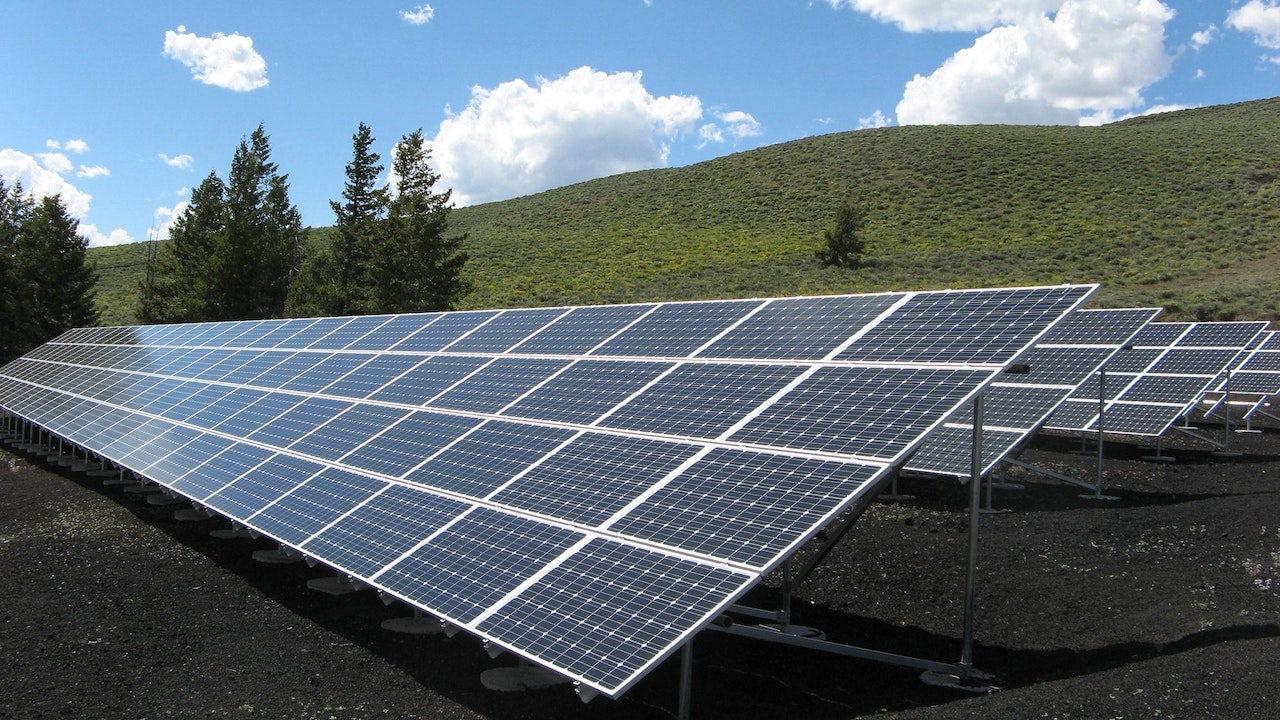
If you only need a minimal amount of electricity — like for RV use or a simple solar generator for use as an electronics charger — you can opt for a moderate-efficiency panel for overcast days, as the energy requirements will be low.
Just be sure to choose a system that provides the proper volts. Bluetti and Renogy are two popular options for these applications.
Comparing authorized solar partners
-
- Industry-leading in-house financing
- Competitive pricing
- Excellent reputation
- Doesn't offer solar batteries (coming 2022)
A+Best Solar Financing2014Trina Solar, Canadian Solar, SolarEdge, Silfab, SunPower25-year manufacturer warranty; 10-year workmanship warranty, 2-year production guarantee
Having trouble deciding? Click below and use our process to receive multiple quotes instead:

 233k
233k  41k
41k  Subscribe
Subscribe 


